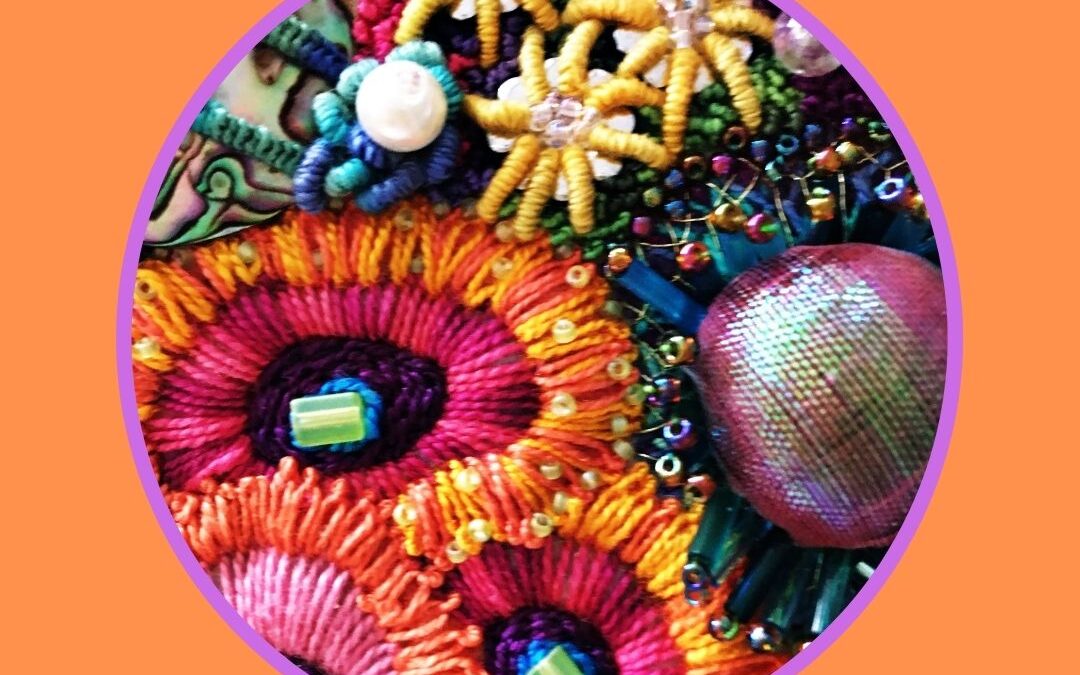An invitation to join a Slow Stitching group popped up on my Facebook page recently.
I joined, posted an image, and received some lovely feedback – plus a ‘slow stitching?’ comment.
Now I’ve heard the term ‘Slow Stitching’ over a number of years now, but what exactly does it mean? Is it referencing hand embroidery only? Does it have to use recycled or old materials? Doesn’t my intricate yet simple embroidery fit?
Time for some research – and what I’ve found was quite interesting.
Mark Lipinski began the Slow Stitch Movement in 2014, modeled on the Slow Food Movement, and while I applaud what Mark has done and why it’s simply clever re-branding and re-marketing – and probably needed to attract a new generation of devotees.
Stitching, embroidery, needlework is what it’s always been – this re-branding has simply opened it up to a different audience, such as those who actively participate in Craftism – a form of activism centered around craft practices. And even that’s nothing new.
According to Mark, slow stitching is not about:
- hand stitching if you don’t want to do hand stitching
- complicated projects
- creating and working on your own designs
- never buying new fabrics, notions, or new machines
- being dumbed down or buying things you don’t need
- never creating quick and easy projects
And this is what slow stitching is about, according to Mark:
- learning new techniques
- taking the time to immerse yourself in the creative process
- developing excellent technique and meaningful projects
- not being duped by commercialism
- supporting local businesses, other artists especially those in your local community as well as understanding the history of textile and fibre art
- creating that one important piece of textile or fibre art in your lifetime
- practicing intentional creativity to reap the health, emotional, financial, spiritual, and creative benefits
- remembering why you began working with textiles and fibres in the first place
- connecting on a deeper level than simply buying, making then hiding the work away
- getting to know ourselves by learning who we are through our art and craft
- using the best fabrics, threads, and tools we can afford
- developing and celebrating excellence in our work
- enjoying the process rather than looking at a deadline
Though not mentioned directly in his initial manifesto, there now seems to be an added component – a connection between sustainability and upcycling, which is fantastic – because that’s something we should all be concerned about.
So in all of this, I get a sense of mindfulness, self-improvement, community engagement, understanding of the industry and its history, creating meaningful work by connecting with the ‘why’, recycling and sustainability, self-development – and pure enjoyment and relaxation (when things go well).
Our Grandmothers and their Grandmothers knew this, way before the Slow Stitch Movement – the art of wellness through doing or as it’s called today, welldoing and while many of them had to stitch to survive – we mainly stitch to create.
Whatever you like to call it, needlework, embroidery, soul-stitching, or slow stitching – I highly approve and promote all it has to offer – whatever it’s called.
Just do it with love and passion and have the confidence to go your own way.


